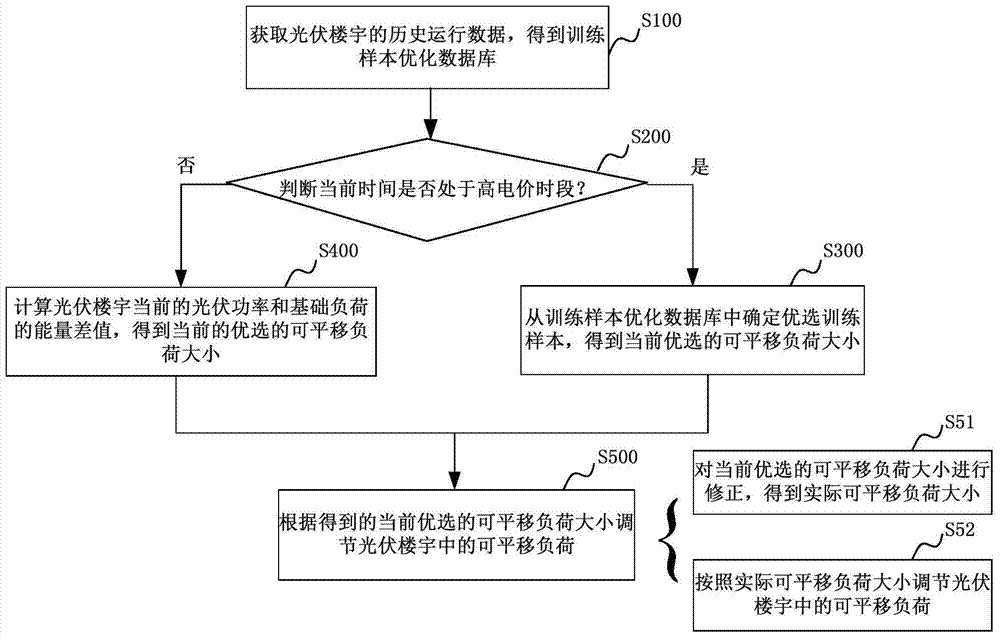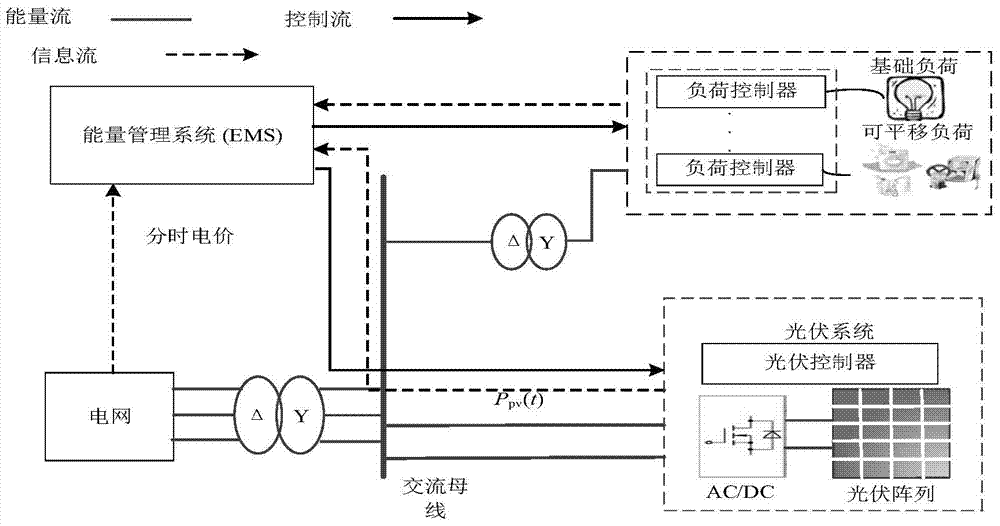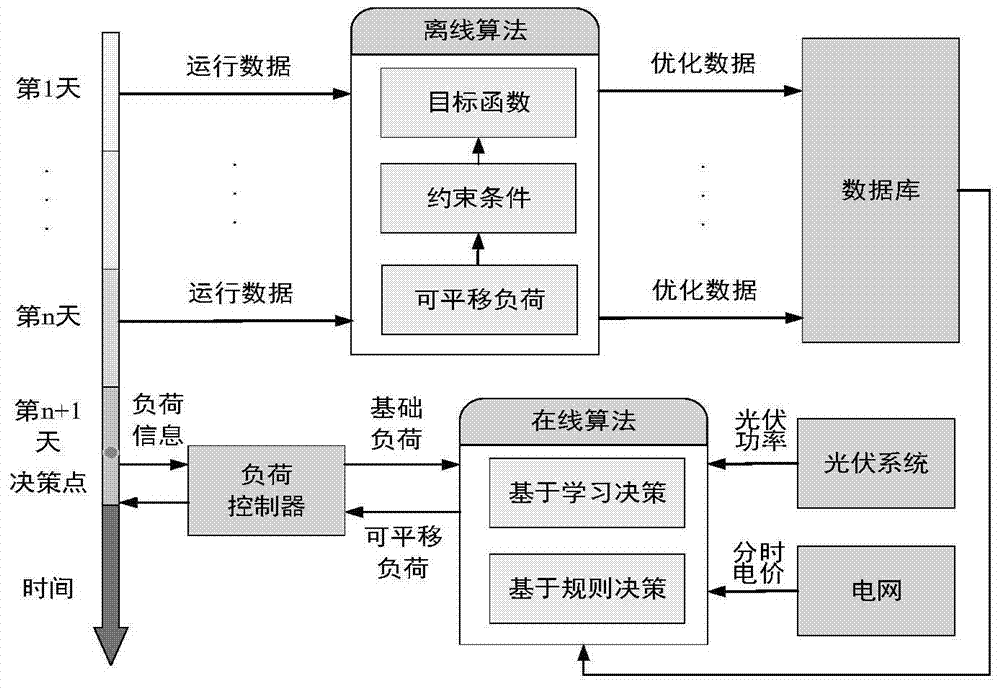Method and system for energy regulation in photovoltaic buildings
An energy regulation and photovoltaic technology, applied in the field of power systems, can solve the problems of low self-consumption rate of photovoltaics, unreasonable use of shiftable loads, unreasonable distribution of system energy purchase and sale, etc., so as to improve economy and reduce electricity purchase expenses. , Improve the effect of photovoltaic self-consumption rate
- Summary
- Abstract
- Description
- Claims
- Application Information
AI Technical Summary
Problems solved by technology
Method used
Image
Examples
Embodiment approach
[0093] Preferably, the calculated current preferred magnitude of the translatable load can be corrected according to the step change characteristics of a single translatable load. The principle is: since the load characteristic of a single translatable load changes in steps, the size change of adjusting the translatable load is discontinuous, and may not be completely consistent with the calculated current preferred translatable load. The actual load of the translational load can be corrected. As a preferred implementation, the correction method can be:
[0094] First freely combine all the translatable loads in the photovoltaic building, and calculate the load size corresponding to each combination; then compare the load size corresponding to each combination with the current preferred translatable load size, and find out the absolute difference between the two For the combination with the smallest value and a difference less than 0 (that is, the load size is smaller than th...
PUM
 Login to View More
Login to View More Abstract
Description
Claims
Application Information
 Login to View More
Login to View More - R&D
- Intellectual Property
- Life Sciences
- Materials
- Tech Scout
- Unparalleled Data Quality
- Higher Quality Content
- 60% Fewer Hallucinations
Browse by: Latest US Patents, China's latest patents, Technical Efficacy Thesaurus, Application Domain, Technology Topic, Popular Technical Reports.
© 2025 PatSnap. All rights reserved.Legal|Privacy policy|Modern Slavery Act Transparency Statement|Sitemap|About US| Contact US: help@patsnap.com



